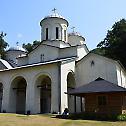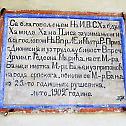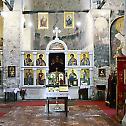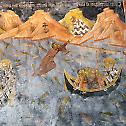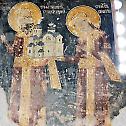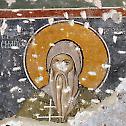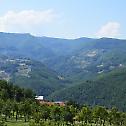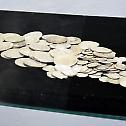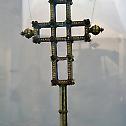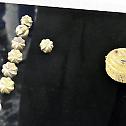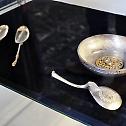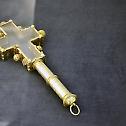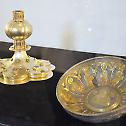Banja of St. Nicholas
Banja Monastery in honor of St. Nicholas the Wonderworker, one of the oldest holy shrines of the Serbian land, stands close to the town of Priboj in the very heart of Serbia. The monastery dates back to the time preceding the Nemanjic Dynasty and the establishment of the independent Archbishopric of Serbia by St. Sava, the enlightener of this land. Today it belongs to the Diocese of Mileseva and is the home of a community of nuns. Its main church is dedicated to St. Nicholas (“Sveti Nikola”), and the Church of the Dormition of the Mother of God is attached to its south wall. The foundations of the earliest original St. Nicholas Church survive on the territory of the monastery as well. It is a monument of cultural and historic significance and is under state protection.
The year of its foundation is unknown, though a monastic community for monks existed here as early as the twelfth century. Its abbot was mentioned in the famous Studenitsa Typikon of St. Sava as a participant in the election of a new abbot of Studenitsa. In 1220, the monastery became the center of the Diocese of Dabar and the monastery was nicknamed “St. Nicholas of Dabar”. Later it became the headquarters of the Metropolis of Dabar-Bosna, founded by St. Sava. The monastery was of great importance under the Nemanjic Dynasty as indicated by the graves of some outstanding figures dating back to the reigns of Stefan Dusan (ruled 1331-1346) and his son St. Stefan Uros V (ruled 1346-1355). In the fourteenth century it also had the mausoleum to the Vojinovic family at the time of their greatest power. The present Church of St. Nicholas was built by St. Stefan Decanski (ruled 1322-1331) in 1329. As was the case with most of Serbian monasteries, Banja was repeatedly plundered and devastated during the Ottoman invasion and rule. However, in about 1570 the monastery’s church was considerably renovated.
In the nineteenth century the monastery lay in ruins for over twenty years until January 1899, when Sultan Abdul Hamid II (ruled 1876-1909) gave the Serbian people permission to restore it. The restoration work was carried out until 1905.
In 1974, a rich vestry was opened at the monastery. It is considered to be one of the best preserved and most complete medieval vestries in the Balkans. Visitors can see many church vessels and other items of the past centuries at this ancient monastery, namely crosses, patens, tabernacles and so forth.
The surviving paintings are represented in two layers: the original one (the first half of the fourteenth century) and the later one (the sixteenth century), created by unknown masters of Pec Art Studio who used the techniques based on the ancient traditions of painting.
The monastery derived its unusual name (pronounced “Banya”, which means “bath-house”.—Trans.] from the thermal (hot) springs on its territory, which are believed to have healing properties.
Source: Orthochristian.com

